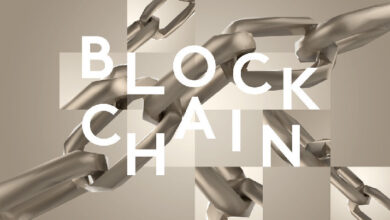Is ‘hands-off’ undercollateralized lending possible? Wildcat thinks so

Wildcat, a lending protocol that has recently landed on Ethereum mainnet, wants to make undercollateralized lending more ‘hands-off.’
The promise of uncollateralized lending is to enable credit and money expansion while remaining decentralized.
In an X post revealing its mainnet launch, the Wildcat Protocol notes that existing processes around Web3 undercollateralized lending are too ‘hands-on’ with various responsibilities falling into the hands of protocols themselves.
Laurence Day, the founder of Wildcat, told Blockworks that often in DeFi, people talk about “don’t trust, verify” writ large and insist that all on-chain agreements must be overcollateralized for safety when the counterparty is pseudonymous.
Though this may be the case, there is also a general acceptance that large-scale agreements between entities that can operate in DeFi must have the necessary paperwork and be executed off-chain.
“We’ve hand-crafted a rod for our own backs when it comes to visibility into deals that are, on aggregate, much more systemically important than any one position on, say, Euler or Aave,” Day said, whose prior Web3 efforts include the ill-fated Indexed Finance.
The name is an homage to the United States’ pre-central bank days in the 19th century, when so-called “Wildcat banks” issued their own private banknotes.
What the Wildcat Protocol hopes to achieve is to minimize the third-party oversight of the undercollateralized lending process, leaving lending and borrowing specifications predominately up to the borrowers and creditors themselves.
According to its whitepaper, there will be four main components involved in the Wildcat protocol:
- An Archcontroller contract monitored by the Wildcat team, responsible for overseeing borrower eligibility;
- Market controller factories that oversee constraints that will be passed on to markets, including fees that must be paid to the protocol;
- Market controllers,the set of rules deployed by individual borrowers into the market controller factories; and most importantly,
- actual markets.
Markets are designed to publicly display which assets borrowers are looking for, at what maximum capacity, and at what annual percentage rate. Borrowers will also have the ability to choose their collateralization ratio, penalty rates and time frame in which they pay their penalties. They will also be able to choose who their lenders can be.
So, unlike the on-chain lending protocol Goldfinch, where borrowers must demonstrate if they are creditworthy through collective assessments, or Maple Finance, which offers borrowers uncollateralized lending at fixed rates, Wildcat simply exists to provide the necessary tools for an undercollateralized on-chain contract. It does not get involved in the lending and borrowing process itself.
“I think it’s important that we give borrowing entities and their counterparties enough freedom to come to their own terms without having to rely on delegates and middlemen dictating parameters. You might call it free banking, I call it the freedom to contract,” Day said.
Wildcat markets are not controlled nor upgraded by the protocol once it has been deployed. This means the market and its interactions belong to the borrower alone, and the protocol will not be able to liquidate collateral, freeze markets, or access any funds.
Lenders can not be forcibly removed from open positions unless they have been placed on a sanctions list. In the case that a ‘sentinel contract’ identifies a sanctioned user using Chainalysis nodes, it will have the capability to revert transactions or withhold assets in an escrow contract.
If a borrower is sanctioned, the protocol has advised seeking legal advice. Noting that “existing reserves can be withdrawn from the market by lenders, but subsequent repayment of assets by the borrower could potentially incur strict liability offenses on the part of a lender.”
Ultimately, Wildcat is designed in a way that enables market participants to engage in undercollateralized lending by making their terms completely public, it will be available to users worldwide, except the United States.
Finding a solution to fractional reserve free banking is a tough nut to crack, but an important one, according to Evgeny Gaevoy, CEO at market maker Wintermute
“If we cannot solve it, I don’t think we can really have any ambition for Bitcoin or Ethereum or whatever-other-token-based economy,” he wrote in a blog post. “‘Full reserve banking is static at best and stagnant at worst.”
And Day agrees.
“If we’re trying to create an alternative to the traditional financial system, we need to find the most suitable way to replicate its most powerful weapon. Wildcat is an iteration on that path: no more, no less,” Day said.
Macauley Peterson contributed reporting.





